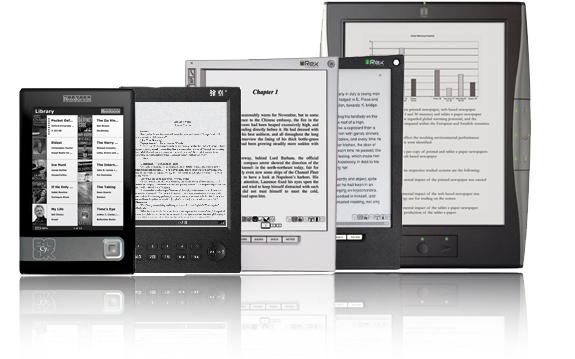

The Electronic Reader market seemed to be bustling for the last 6 months, with the crescendo happening at the Consumer Electronics Show in Vegas earlier in the year.
With the success of the Apple iPad, and other more affordable Slate PC’s, such as the Archos 7 which displays full color, we have seen more consumers gravitating towards the multi-media driven devices, rather than a device that just functions as an E-Reader.
Many mainstay E-Reader companies over the last few years have closed up shop. For example, the filing for bankruptcy of iRex last month, and the Cool-ER also filed for bankruptcy are currently in court diving up their corporate assets.
Other more promising e-readers, such as the Plastic Logic Que, have refunded all of the existing pre-orders and canceled plans to release the product anytime soon.
If you look at the trend, most e-readers that have failed in the market place, or decided against even entering it. Although they have had viable products, they just could not competitively meet the current device expectations.
“Companies that had neither brand nor distribution have failed,” says Sarah Rotman Epps, an analyst for Forrester Research.
Many of the more popular e-readers right now, such as the Amazon Kindle, Barnes and Noble Nook, Sony E-Readers, and Kobo are all backed by large book stores and have direct ties to their entire content network of electronic books. Which makes those products more viable for the end user because of an extensive selection, which ranges in the hundreds of thousands of books to choose from.
Although content distribution is not the only factor to make the big 4 popular with customers, there is also the price point. All of the companies in the last few months have slashed prices on their e-readers. You can now buy a Kindle 2 for $189.00, a Nook for $199 and Sony cut prices on every e-reader available.
The price slashes seem to have worked. Amazon claims to have sold triple the amount of Kindles bringing the price down from $254 to $189 in a matter of months. More users are buying e-readers now that the price is in the 100.00 range.
This price slash on e-readers is directly linked to the success of the Apple iPad. As we mentioned, users are gravitating more to multi-media devices, instead of buying the single-purpose E-Readers. This is galvanizing electronic reader companies to use more feasible operating systems for expanded content, such as Google Android, and its plethora of applications available. Even Amazon is hiring new staff for a new Web Browser, Email and recently introduced Facebook and Twitter updates in its latest firmware update.
Although more people this year will buy tablet computers instead of e-readers, this does not mean that people will give up on them completely. The Shift to Digital Books is indeed here to stay. Forrester Research estimates 6.6 million e-readers will be sold in the United States this year. Approximately 29.4 million e-readers may be sold in the United States by 2016, compared to 59 million tablets.
Earlier this week, Amazon said for the first time sales of e-books are outstripping hardcovers. In June, Amazon sold 180 e-books for every 100 hardcovers. In the first six months of the year, the company sold three times as many e-books as it did in the first half of 2009.
Michael Kozlowski is the editor-in-chief at Good e-Reader and has written about audiobooks and e-readers for the past fifteen years. Newspapers and websites such as the CBC, CNET, Engadget, Huffington Post and the New York Times have picked up his articles. He Lives in Vancouver, British Columbia, Canada.
